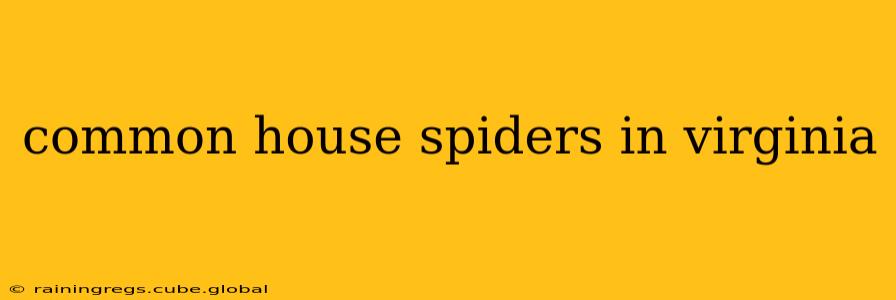Virginia, with its diverse ecosystems ranging from mountains to coastal plains, is home to a variety of spider species. While many are harmless and even beneficial, encountering spiders indoors can understandably cause concern. This guide focuses on identifying common house spiders found in Virginia, dispelling myths, and providing practical advice on coexistence.
What are some common spiders found in Virginia houses?
Several spider species frequently invade Virginia homes. These include, but are not limited to:
-
American House Spider ( Parasteatoda tepidariorum ): This is probably the most common house spider in Virginia. They are small, with a mottled brown and tan body, and create messy, irregular webs in dark corners and crevices. They are generally harmless to humans.
-
Cobweb Spider ( Theridiidae family ): This family encompasses several species often found in Virginia homes. They are characterized by their irregular, sticky webs and generally small size. Like American House Spiders, they are not considered medically significant.
-
Cellar Spider ( Pholcidae family ): Often called daddy longlegs, these spiders have extremely long, thin legs and small bodies. Their webs are irregular and messy, typically found in dark, damp places like basements and cellars. Despite common myths, their bite is harmless to humans.
-
Jumping Spiders ( Salticidae family ): These are easily identified by their excellent jumping abilities and forward-facing eyes. They are usually small to medium-sized and often brightly colored. While they can be found indoors, they are more common outdoors. They are not considered dangerous to humans.
-
Wolf Spiders ( Lycosidae family ): Larger than most house spiders, wolf spiders are hairy and hunt their prey rather than using webs. They are often found near doors and windows, and while they can bite, their venom is generally not harmful to humans.
Are spiders in Virginia dangerous?
While Virginia is home to some spiders with venomous bites, such as the black widow and brown recluse, encounters within homes are rare. The spiders listed above are generally considered harmless to humans. Their bites might cause minor irritation, similar to a mosquito bite, but they pose no significant health threat.
How can I identify spiders in my Virginia home?
Accurate identification requires close observation. Take a clear photo of the spider, noting its size, color, body shape, leg length, and web type (if present). You can then compare your photo to online resources such as the Virginia Department of Wildlife Resources website or reputable entomology websites. If you are concerned about a particular spider, consider contacting a local pest control professional for identification and advice.
What is the best way to get rid of spiders in my house?
The most effective way to reduce spider populations indoors is to eliminate their food sources – other insects. Regular cleaning, vacuuming, and sealing cracks and crevices can greatly reduce the number of insects and spiders. Instead of killing spiders, consider relocating them outdoors.
What attracts spiders to my home in Virginia?
Spiders are drawn to areas with abundant prey, such as insects. Clutter, dampness, and poorly maintained areas provide ideal hiding places. Exterior lighting also attracts insects, which in turn attract spiders.
How dangerous are house spiders in Virginia?
The majority of house spiders in Virginia are not dangerous to humans. Their bites, if they occur, are typically minor and cause only localized irritation. Serious bites from medically significant spiders are uncommon in homes.
This guide provides a general overview. Remember to always exercise caution when handling any spider and to seek professional advice if unsure about identification or if you experience an adverse reaction to a spider bite. Responsible coexistence is often the best approach for managing spider populations in your Virginia home.
